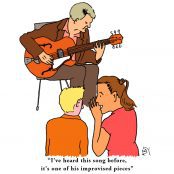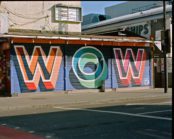In 2014 archaeologists dated some stencil art first discovered in Indonesian caves some decades earlier.
The results via uraniam-thorium dating suggest that this form of art has a history going back as far as 40,000 years. Depicting pigs and the outline of (presumably the artist’s) hands, then as now, it appears that spray artists have an abiding interest in putting a personal stamp on the consumer culture of the day.
Jumping forward a few millennia we see artists traipsing through East London at its darkest, fearing discovery, braving danger and consequence, to make their mark. Without making your way through a cave system or winding behind the wire fences of a train yard or trying to be invisible in plain sight, it’s hard to fully appreciate the artistic frisson that drives these artists to create. In as much as the meaning of their work is important the execution and the act is as central as the artwork itself. Or so it was.
The profile of the street artist has changed dramatically over the last 15 years, from underground figures who largely kept their own company to commercial artists who often come from traditional art school backgrounds, and yet the act and execution hasn’t changed. But even if the mythos of street art remains the same the financial prospects and possibilities have changed what it means to participate. From an exclusive and competitive band of criminals participating in artistic activity to a legally tolerated viable avenue for financial recognition, if the core motivation has evolved what does this mean for the art form?
Olly Walker is a prominent artist, publisher and curator of over 20 years. His involvement in the street art scene spans back to 2000, while based at the legendary Artomatic. Later, upstairs from POW, he started designing artists’ monographs for The Outsiders Gallery and Banksy’s former agent, Steve Lazarides. He has worked directly with some of the biggest and most recognisable stars of the movement and is the founding director of OllyStudio, a London-based agency which collaborates with artists, galleries and global brands to realise unique experiences. He is also the founder of Made Corrections, a street art based rehabilitation programme working with young offenders in Lithuania.
peaking to Walker, it is not a question of whether the halcyon days of graffiti and street art are gone but what new horizons have opened up.
Is there a change in perception in what street art is? Do the artists consider themselves as giving it away for free?
It’s a free entity, but obviously everybody else is used to worth. You can make a living doing all the street art fairs, but any artist wants to be in a gallery—apart from the writers, they’re probably not that bothered.
Certain art markets are driven purely by what you can get for it, it’s as simple as that. It’s like an antiques market; certain people have kudos, certain galleries. If you’re with that gallery, you’re made; they will drive the market price. As certain things come through, these big galleries all have to make a living, keep an eye out. If they can slot in, so long as it realises the value they need it to be, then that’s that. Auction houses are probably the best at giving accurate guides. They’re never wrong.
They’re never wrong because it’s dependent on them.
That’s the only time it’s ever on the news, when it goes to 10 times higher. But then conversely, when galleries bomb with certain shows, it’s swept under the carpet. Although the show I’ve just done at the Versace gallery was just incredible. The Cash is King show, which was defaced art.
Adrian Burnham wrote an amazing piece in the New European about it, and there were various other bits. There was a book supporting the show; that’s in the British Museum as are some of the banknotes.
It’s like a record of the Saatchi gallery, within the Prints and Originals gallery. We got 111 pieces in there and we’ve sold 100. There’s a reason for that, and the reason is we went in with an entry level price of £120 including VAT. When you’ve got an entry level price, people can walk in, feel part of the show, and walk away with something from a named gallery with an original piece by an artist that they may well know.
And chances are it will appreciate.
Read this article in full in Trebuchet 5 – Art and Crime

Trebuchet Issue 5 Art and Crime

The aim of art is to represent not the outward appearance of things, but their inward significance. – Aristotle






















